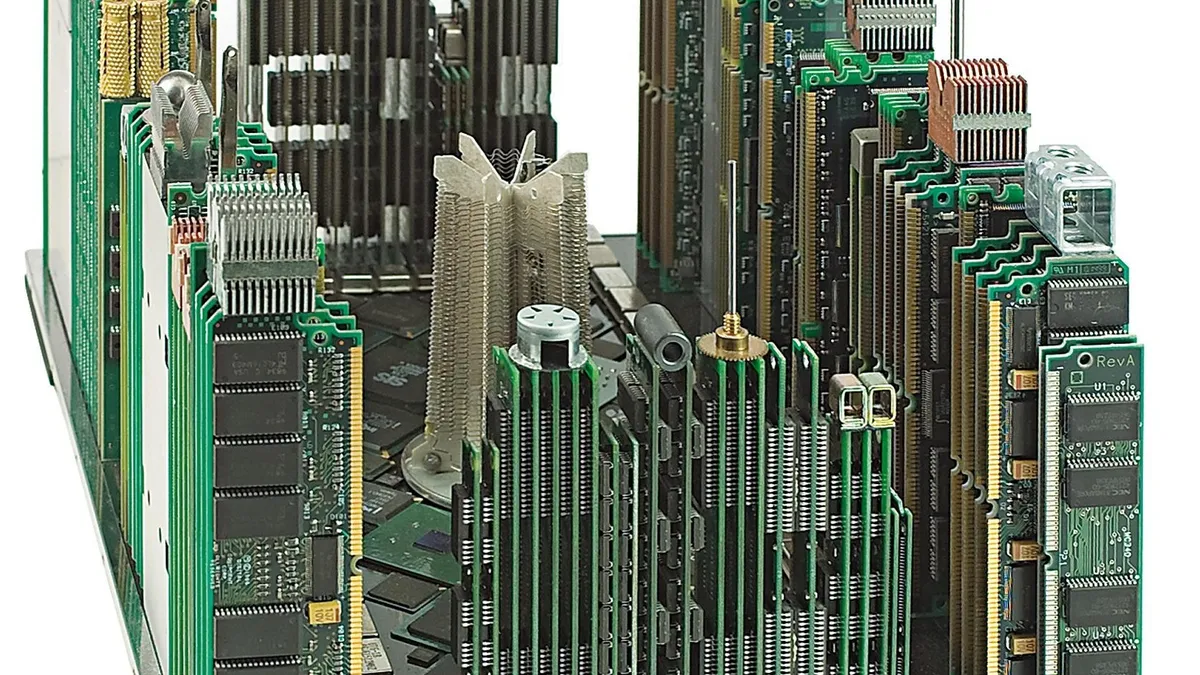Strategic planning and technology enhance dock area efficiency. Maximizing space reduces bottlenecks, speeding workflows. RFID and data analytics tools optimize space allocation. Automation boosts productivity in modern warehouse management. Optimize space use for enhanced competitiveness. In the article, learn about efficient dock space utilization for maximizing operational productivity.
Key Takeaways
- Implement automated dock appointment scheduling systems for efficiency.
- Utilize RFID technology for accurate inventory tracking.
- Utilize real-time data analytics tools to optimize dock space.
- Integrate technology to modernize warehouse operations.
- Reduce wait times by improving efficiency through technology.
Challenges in Dock Space Management
Challenges in Dock Area Arrangement pose a significant hurdle to achieving peak efficiency in warehouse operations. Subpar layout designs, absence of adequate equipment staging areas, and ineffective traffic flow contribute to delays and inefficiencies. By tackling these obstacles through strategic planning and optimized organization, warehouse operations can boost productivity and streamline processes for maximum efficiency in dock space management.
Importance of Efficient Utilization
Effective utilization of berth space is a pivotal component in enhancing warehouse operations, directly impacting productivity and operational efficiency. Maximizing the use of dock space guarantees smoother workflow, reduces bottlenecks, and optimizes resource allocation. Improved utilization leads to faster turnaround times, increased throughput, and better overall performance. Strategically managing berth space is vital for meeting customer demands quickly and maintaining a competitive edge in the market.
Technology Solutions for Optimization
Implementing advanced technological solutions is essential for maximizing dock space utilization and streamlining warehouse operations effectively. Automated dock appointment scheduling systems, RFID technology for inventory tracking, and real-time data analytics tools are just a few examples of how technology can optimize dock space. These solutions improve efficiency, reduce wait times, and improve overall operational performance, catering to the modern warehouse’s need for advanced technology integration.
Data-Driven Decision Making
Leveraging data analytics to propel strategic decision-making processes is essential in maximizing dock space utilization and improving overall operational efficiency in contemporary warehouse environments. By harnessing data-driven insights, warehouse managers can make well-informed decisions regarding dock space allocation, scheduling, and resource allocation. This approach facilitates a more efficient use of available space, minimizes bottlenecks, and boosts productivity, ultimately leading to a streamlined and optimized warehouse operation.
Automation for Streamlined Operations
Automation plays a pivotal role in enhancing operational efficiency by streamlining processes and reducing manual labor. Utilizing tech solutions for automation can lead to significant enhancements in productivity and cost-effectiveness. Embracing automation is crucial for modern businesses seeking to optimize their dock space utilization and overall operational performance.
Operational Efficiency Through Automation
Incorporating state-of-the-art technology into operational processes can significantly boost productivity and efficiency within a business environment. Automation plays an essential role in streamlining operations by reducing manual tasks, minimizing errors, and enhancing overall workflow. By automating repetitive processes such as data entry, inventory tracking, and scheduling, companies can optimize their dock space utilization, leading to improved operational efficiency and cost savings.
Tech Solutions for Streamlining
To optimize operational efficiency and maximize dock space utilization, businesses are increasingly turning to advanced technological solutions for streamlining operations. Automation tools such as automated dock appointment scheduling, RFID tracking systems, and real-time data analytics facilitate smoother workflows, reduced wait times, and improved resource allocation. These tech-driven approaches not only boost productivity but also contribute to overall cost savings, making them crucial for modern dock space management.
Maximizing Storage Capacity
Maximizing storage capacity within dock spaces is a pivotal aspect of efficient operations in logistics and warehousing. Utilizing advanced inventory management systems and automated storage solutions can optimize space utilization. By analyzing data on inventory levels, demand patterns, and storage layout efficiency, businesses can strategically allocate resources, reduce waste, and advance overall productivity. Implementing these data-driven approaches cultivates a sense of belonging within the industry by cultivating operational excellence and cost-effectiveness.
Enhancing Workflow Efficiency
To improve workflow efficiency in dock operations, it is vital to implement streamlined techniques and utilize technology effectively. By optimizing processes and embracing creative solutions, such as automation and digital tools, organizations can greatly enhance productivity and reduce operational bottlenecks. A strategic focus on workflow improvement can lead to smoother operations, quicker turnaround times, and overall increased efficiency in dock space utilization.

Workflow Streamlining Techniques
Revolutionary workflow streamlining techniques are important in improving efficiency within operational processes. By analyzing current workflows, identifying bottlenecks, and implementing lean methodologies, organizations can optimize productivity. Streamlining techniques such as value stream mapping, standardizing processes, and implementing cross-functional teams can improve overall workflow efficiency. Continuous improvement through regular assessments and feedback loops guarantees that operations remain agile and responsive to changing demands, leading to improved performance and customer satisfaction.
Technology for Efficiency
Utilizing advanced technological solutions is vital in improving workflow efficiency within modern operational frameworks.
- Automation tools reduce manual tasks.
- IoT sensors track inventory real-time.
- AI algorithms optimize scheduling.
- Robotics expedite loading/unloading.
- Cloud platforms advance data accessibility.
Real-time Monitoring and Tracking
Implementing real-time monitoring and tracking systems improves operational efficiency and allows precise oversight of dock space utilization. By utilizing advanced technology, businesses can monitor inbound and outbound activities, track inventory levels, and optimize resource allocation in real-time. This data-driven approach strengthens decision-making processes, minimizes delays, and improves overall productivity within the dock space environment.
Best Practices for Dock Space Efficiency
Building upon the foundation of real-time monitoring and tracking systems, optimizing dock space efficiency involves implementing strategic measures to enrich operational effectiveness and maximize resource utilization.
- Implement Dock Scheduling Software: Streamline appointments.
- Utilize Cross-Docking Techniques: Enhance throughput.
- Prioritize Dock Layout Optimization: Minimize congestion.
- Invest in Automated Dock Equipment: Improve efficiency.
- Train Staff on Efficient Loading/Unloading Practices: Boost productivity.
Frequently Asked Questions
How Can Technology Solutions Help Optimize Dock Space Utilization?
Technology solutions can optimize dock space utilization by streamlining operations, enhancing visibility, and automating processes. Advanced systems empower real-time data analysis, efficient resource allocation, and improved productivity. By harnessing technology, businesses can maximize efficiency and throughput.
What Are the Benefits of Data-Driven Decision Making in Dock Space Management?
Data-driven choice making in dock space management offers unmatched benefits such as improved operational efficiency, minimized downtime, optimized resource allocation, and enhanced overall productivity. By utilizing data insights, organizations can make educated choices leading to cost savings and streamlined operations.
How Does Automation Contribute to Streamlined Operations in Dock Space Utilization?
Automation in dock space utilization streamlines operations by enhancing efficiency, reducing errors, and optimizing resource allocation. Through automated processes like planning, monitoring, and stock management, businesses can achieve cost savings, improved productivity, and better customer service.
What Are the Best Practices for Maximizing Storage Capacity in Dock Spaces?
Maximizing storage capacity in dock spaces involves strategic layout planning, utilizing vertical space efficiently, implementing inventory management systems, and optimizing workflow processes. By integrating technology for real-time tracking and data analysis, businesses can improve storage capabilities and operational efficiency.
What Are the Advantages of Real-Time Monitoring and Tracking in Efficient Dock Space Utilization?
Real-time monitoring and tracking provide a competitive edge in dock space utilization by enhancing visibility, efficiency, and security. It empowers proactive decision-making, reduces idle time, minimizes errors, and optimizes resource allocation. Ultimately, it streamlines operations and boosts overall productivity.
Conclusion
In summary, the integration of technology and strategic methodologies plays a crucial role in optimizing dock space utilization. By utilizing data-driven decision making, automation, and real-time monitoring, organizations can improve operational efficiency and maximize storage capacity. Through the implementation of best practices, businesses can transform their dock operations and drive productivity. Embracing a tech-driven approach is vital for unlocking new possibilities and achieving efficient dock space utilization.
You May Also Like:






